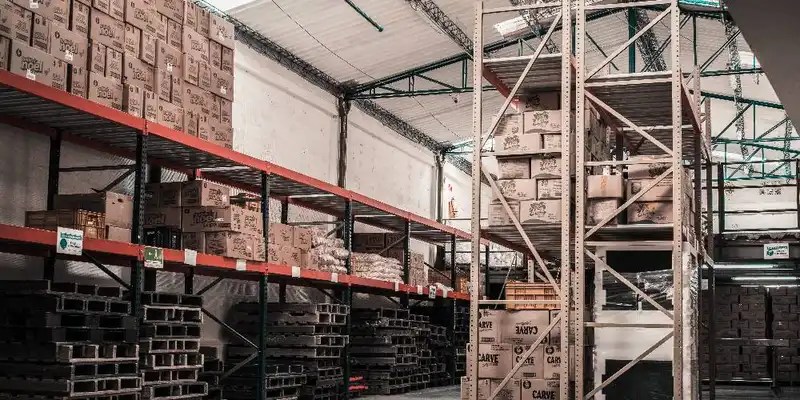Inventory Order Management and Stock Control- What to Know
Behind the closed doors of a business, inventory management is what keeps the wheels turning. This all-important system sums up the crucial steps in the supply chain where inventory quantities are tracked in and out of a company's warehouse or storage space.
The purpose of this management system is to keep track of stock locations and quantities at all times to lower risks of misplaced and lost stock, overstocking, and even incorrect shipping. With accurate stock level reports in hand, businesses can ensure they are replenishing to maintain effective inventory levels.
By implementing outstanding inventory management and ordering procedures, companies can maximize profits, minimize wastage, and enjoy a wealth of benefits such as increased productivity, sales, and consumer loyalty.
Maintaining this fine line of optimal inventory reordering can be a great challenge for businesses, especially during peak seasons. However, the following guidelines on recommended inventory control and ordering frequency can be a great place to start for many business owners.
Stock Control Procedures

Overstocking and understocking come with their own advantages and disadvantages. So, how much stock should a company keep on hand at all times? Everything from the size of the business and its products, to the available storage space and lead times can affect a business's stock control procedures.
While storing high levels of stock can be a reliable method for companies moving high volumes on a regular basis, in an industry sector where product demand fluctuates regularly, it's wise to first consider the consequences before loading the warehouse to maximum capacity.
For businesses that have the warehouse management space available at a low cost or sell products that take a longer period of time to reorder, overstocking, and ordering in bulk can ensure they never run out of essential products. Additionally, this practice may lower purchasing costs as buying in bulk is oftentimes cheaper. However, it's important to remember that more stock leads to higher storage and insurance costs. There is also the added risk of the stock becoming obsolete or spoiling before ever reaching the consumers.
On the other hand, ordering the minimum quantity necessary can be a more efficient and flexible method for fast-moving businesses with new products developing frequently. This method ensures companies only have what they need, when they need it, with lower storage costs and lower risks of spoilage. However, understocking comes with its own share of disadvantages, such as an increased risk of stockouts and being overly dependent on the efficiency of suppliers.
Beyond simply overstocking or understocking strategies, companies can further utilize a multitude of inventory control methods to create a smooth ordering system that meets the needs of consumers. Some tips to manage inventory include-
- Regular stock reviews - Frequent and regular stock reviews should be conducted to ensure efficiency and accuracy in inventory levels. After these reviews are produced and confirmed, stock can be ordered to make sure each item is returned to a predetermined optimal level.
- Just in time inventory - Similar to the old running on empty adage, this management technique relies on stock being delivered only when required for instant resale or usage. This strategy only functions well if suppliers are able to fill an order quickly and with minimal notice.
- Determine the economic order quantity - Most businesses will benefit from finding a balance between too little and too much stock. With inventory management and ordering software, businesses can maintain their stock at these optimal levels.
- First in, first out - This system is most commonly utilized for perishable items. It involves identifying products by the date it is received and moving it through a strict order of production. As the name suggests, the items received first will take priority and will be sold or used first.
How to Determine an Optimal Ordering Frequency

While a certain amount of guesswork is employed to determine ordering frequencies for smaller businesses, the secret to nailing this vital aspect of inventory management comes down to accurate reporting.
After all, information is power, and the best information to help a company understand just how often stock orders should be fulfilled comes from its own historical sales reports. These data sets can show past peak seasons, as well as which items sold the most and least.
When broken down into their channels, these sales and stock reports deliver valuable data on what items were sold and when to provide companies with increased clarity on product demand.
When preparing for peak seasons, businesses should take extra precautionary measures to prepare for the increased demand-
- Confirm recorded inventory levels are consistent with actual stock by conducting regular cycle counts.
- For an eCommerce business or online store, inventory all shipping supplies, and ensure they are stocked adequately and ready to use.
- Consider employing temporary, seasonal workers to account for higher levels of foot traffic
- Refer back to historical sales reports to ensure the adequate amount of stock has been ordered to keep up with demand
The inventory ordering and management software will automatically notify users when inventory levels are depleting and can be programmed to send out purchase orders to suppliers automatically. With the help of POS data, automated ordering procedures may also be able to take into consideration historical sales averages to maintain different optimal levels throughout the year.





